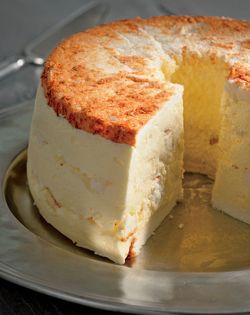Advertisement

Preparation info
- Serves
12 to 16
- Difficulty
Medium
- Ready in
30 min
Appears in
Published 2014
Fine Cooking magazine once asked me to create a recipe for a classic old-time lemon icebox cake. I had already perfected the two components, the angel food cake and the lemon mousse, as separate desserts, so the challenge was to transform them into one spectacular pièce de resistance. The angel food cake is cut into two rings for the top and bottom of the cake. The rest of the cake is cut into cubes and folded into the lemon mousse. The cake ri


